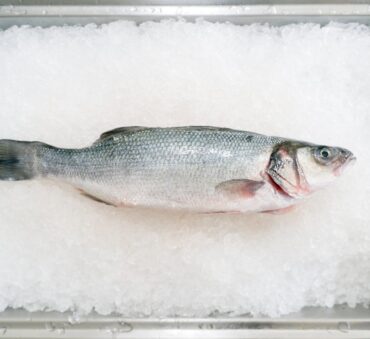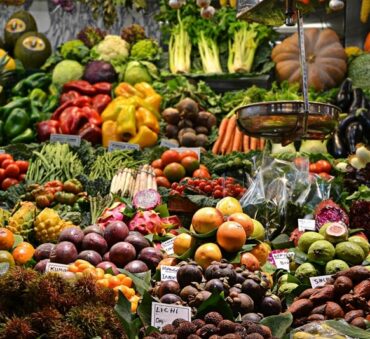In 2015, the United States announced a food loss and waste reduction goal, aiming to reduce food waste by 50% by 2030. With this goal have come new sustainability efforts and increased awareness, yet many still wonder: Is food waste really that bad?
In the United States, a shocking 30-40% of the food supply is wasted, resulting in approximately 133 billion pounds and $161 billion worth of food each year. Unfortunately, a large percentage of this food is sent to landfills, contributing to greenhouse gas emissions, the unnecessary consumption of water and food production that’s never consumed, and increased pollution.
Food waste also has severe social implications. In 2022, 12.8 percent of U.S. households were food insecure at least some time during the year, billions of pounds of food are still being thrown away every year. With food waste and food insecurity coexisting in the same space, new solutions are required to bridge this gap and reduce the environmental impact of food waste being sent to landfills.
Food waste apps in the USA are emerging as an innovative approach to food waste, offering solutions for households and businesses along the supply chain. Keep reading to learn more about technology’s role in reducing waste, the top apps to reduce food waste, and additional tips to fight this crisis.
Key Takeaways
- Food waste apps in the US have helped shape how Americans approach food waste and consumption, making it easier and more accessible for everyone to get involved.
- Examples of apps to reduce food waste include grocery shopping apps, donation platforms, food waste tracking apps, apps that help users buy unsold food from local eateries at a discounted price, apps that help businesses manage grocery inventories to prevent spoilage, and community sharing platforms.
- 5 of the top apps fighting food waste in the United States today include Too Good To Go, Nosh, Olio, NoWaste, and Kitche, all of which offer innovative strategies to reduce waste and the environmental consequences associated with it.
- Additional strategies to reduce food waste should also be implemented, such as food waste recycling, donating surplus food, learning how to read expiration dates, and purchasing ugly produce.
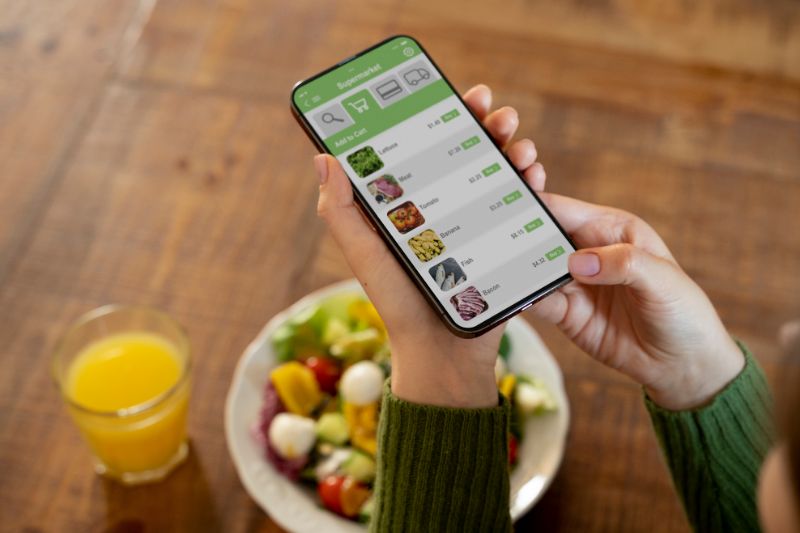
The Increasing Role of Technology in Addressing Food Waste
Technology has emerged as a pivotal player in tackling environmental and sustainability challenges within the U.S., offering innovative solutions to the food waste crisis. In recent years, there’s been a shift towards digital solutions, with food waste management technology offering an array of benefits, such as improved inventory management, optimized production processes, and insights into food waste data and consumer behavior.
Technologies such as mobile apps to reduce food waste, AI, and the Internet of Things (IoT) have been increasingly leveraged to monitor, reduce, and manage waste, energy consumption, and the overall environmental footprint.
There are a number of ways that AI can help with food waste management, with predictive analytics being one of its best features. Predictive analytics uses data to predict future trends and events, helping to reduce overproduction and waste by aligning production with consumer demand.
In today’s technology-driven world, the adoption of food waste technology to reduce waste is key to creating more effective solutions and gaining more widespread attention. With a growing consumer demand for sustainable practices, technology plays an important role in empowering individuals to make more informed decisions that contribute to sustainability goals.
The Growing Role of Mobile Apps in Reducing Food Waste
Mobile apps have been especially important in the fight against food waste, making it easier and more accessible for everyone to get involved. These applications apply to different areas of the supply chain, helping individuals, small companies, and large organizations contribute to sustainability goals.
There are different types of food waste apps in the US, including grocery shopping apps, donation platforms, food waste tracking apps, apps that help users buy unsold food from local eateries at a discounted price, apps that help businesses manage grocery inventories to prevent spoilage, and community sharing platforms, among others.
The availability of apps has contributed to a change in how Americans approach food consumption and waste. These apps not only raise awareness but also offer individuals convenient solutions that seem more attainable.
The increased adoption of apps to reduce food waste offers various benefits, such as reducing food waste in landfills, minimizing food waste’s effect on the environment, and fostering a culture that values sustainability and community effort.
Spotlight on Food Waste Apps Reducing Waste Across the US
With a growing focus on sustainability, food waste apps in the USA have emerged as a popular option to reduce waste. There are a large variety of apps available that focus on different aspects of food waste reduction, including tracking, sharing, reusing, and improving food management to reduce waste.
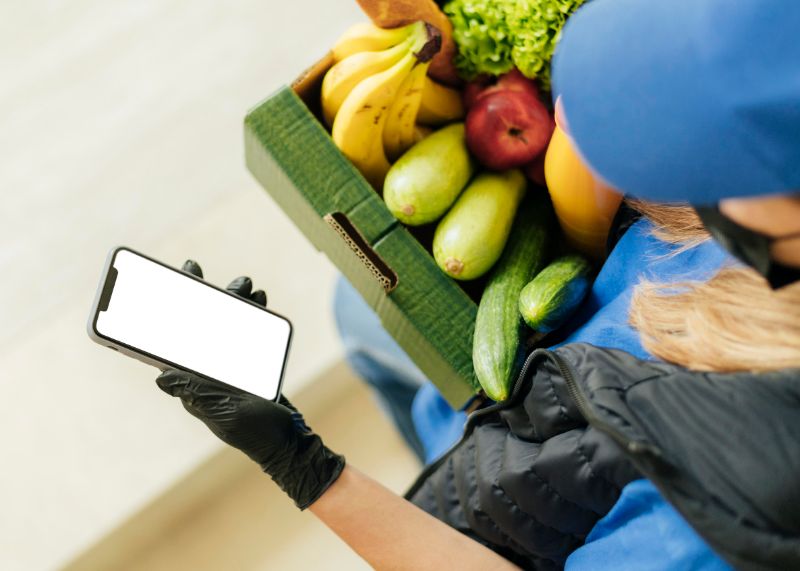
To get an idea of the different types of apps to reduce food waste, let’s explore 5 popular applications in the United States today.
Too Good To Go
Too Good To Go is an application that connects users to restaurants and stores that have surplus food. By allowing users to buy food that would otherwise be wasted, individuals and families can purchase products at a discounted price, offering cost savings and increasing the availability of products to a wider audience. This mobile application also has various environmental benefits, working to reduce food waste in restaurants, minimize food waste in supermarkets, and contribute to sustainability goals.
Nosh
Nosh is a food management app that helps households track food, preventing waste through alerts and suggestions. This app works by helping you track your food inventory, medicines, and expiration dates, offer recipe suggestions, and create personalized shopping lists. It also uses AI to track food buying and wasting habits, helping households cut back on everyday waste and save money.
Olio
Olio is an application that helps share surplus food and products within local communities, allowing individuals to share what they don’t need and find what they do. This model helps reduce food waste in homes, give items a second shelf life, and build a community that revolves around sustainability. As a result, less food and products are sent to landfills, families can save money by finding products locally, and neighborhoods can improve their food waste reduction efforts.
NoWaste
NoWaste helps families reduce waste by keeping an inventory of their groceries, offering an array of features that help individuals keep track of their food habits. Families that want to better manage their food can use this app to create inventory lists, sort food by expiration date, and create shopping lists to avoid unnecessary purchases.
Kitche
Kitche makes kitchen management easier for households, from tracking ingredients to suggesting recipes. Users can use the app to keep track of their food, scan barcodes or supermarket receipts, explore food waste hacks and tips, and find recipes that are filtered by the products they have at home. The goal of this app is to reduce waste, minimize the environmental effects of waste, and save households money.
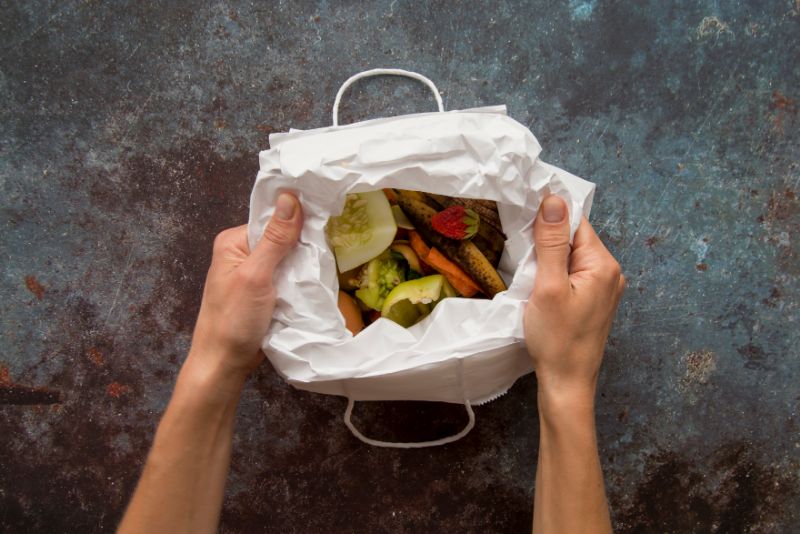
What else can be done to reduce food waste?
There are multiple ways that households and businesses can reduce food waste, with innovative strategies available for various circumstances. This includes:
- Learning how to read expiration dates: Misunderstandings of expiration dates are a large contributor to waste. Since there is no uniform system that manufacturers are required to use, many consumers throw away perfectly edible food due to confusion over “sell-by,” “best-by/best if used by,” “expiration date,” and “freshest by” labels. Consumers can reduce waste by paying attention food expiration dates before it goes to waste and educating themselves on how to identify when a product has expired.
- Purchasing ugly produce: Produce that does not meet strict aesthetic standards is often discarded at various stages of the supply chain. That said, throwing out ugly fruits and vegetables waste generates large quantities of waste in the United States, leading to excess landfill use and contributing to food insecurity. Both consumers and businesses must change their mindset toward the appearance of produce, prioritizing the sale of ugly produce through discounts and awareness campaigns.
- Food waste recycling: Food waste recycling converts organic waste into valuable products and materials, supporting a circular economy through techniques such as turning waste into animal feed and energy. One of the popular recycling strategies utilized by businesses and households is composting, a process that converts organic materials into nutrient-rich compost. Composting food waste can be done in households, through community initiatives, or as part of large-scale reduction efforts.
- Donating surplus food: Donating food is a great way to reduce food waste while giving back to your community. As an added bonus, donation efforts may be eligible for food waste tax deductions, making them a great option for businesses that need to reduce costs. To encourage donations, there are food waste apps in the US that facilitate the process.
The Bottom Line
Food waste apps in the USA offer innovative solutions to different aspects of food waste management, making it easier for both businesses and individuals to prioritize their sustainability efforts and give back to the community.
For businesses that are committed to fighting food waste, collaborating with a food waste management company is key to creating large-scale change. At Shapiro, we provide sustainable solutions to commercial food waste disposal, putting innovation at the forefront of our solutions. We’ll work with you to create tailored solutions that meet your specific business needs, helping you reduce your environmental footprint and establish new standards in your industry.
Contact us to learn more about our waste management services.
Baily Ramsey, an accomplished marketing specialist, brings a unique blend of anthropological insight and marketing finesse to the digital landscape. Specializing in educational content creation, she creates content for various industries, with a particular interest in environmental initiatives.


